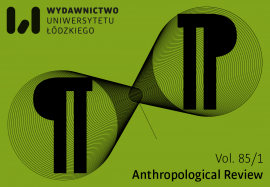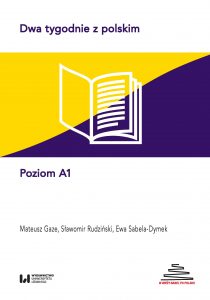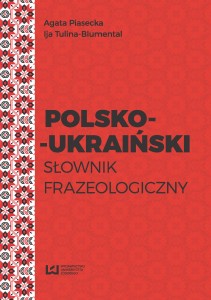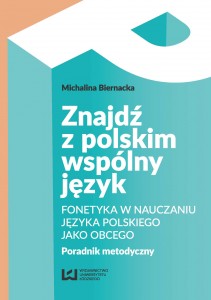Anthropological Review | Vol. 85 No. 1
Opublikowano: 29 kwietnia 2022

Anthropological Review to czasopismo wydawane przez Wydawnictwo Uniwersytetu Łódzkiego w koedycji z Polskim Towarzystwem Antropologicznym. W czasopiśmie publikowane są prace z zakresu antropologii fizycznej i dyscyplin pokrewnych oraz w badaniach interdyscyplinarnych: naukach o kulturze fizycznej, zdrowiu i jakości życia człowieka, naukach społecznych, genetyki populacyjnej, biologii, ekologii i auksologii człowieka.
W nowym tomie:
The plague’s impact paleodemographic and genetic measures in 15th to 16th century Gdańsk
Alicja Budnik, Aleksandra Pudło
Yersinia pestis caused plagues and haunted Gdańsk several times during the 15th and 16th centuries. This study focuses on the following demographic effects: 1/ distributions of deceased by age in a plagued city, 2/ parameters of the life tables, 3/ estimation of the natural increase. To assess genetic effects of the plague, measures of the opportunity for natural selection were considered. Skeletal remains of 283 people from the 15th – 16th century ossuary 3009 from the Dominican Monastery in Gdańsk provided research material. Yersinia pestis DNA in this skeletal material has already been found (Morozowa et al. 2017, 2020). Distributions of the deceased by age in the study sample were compared with those for Gdańsk before the plague and with those for the mass burial of plague victims in the 14th century Lübeck. Neither catastrophic mortality was found in the material studied, nor selective nature of the plague with regard to sex and age had been demonstrated. Using the Weiss method, the rate of natural increase r=–0.005 was reconstructed. With the wide dating range of the ossuary and the fact that it contains results of both the epidemic and “normal” mortality, the natural increase value at this level seems justified. There was a deterioration in the values of life tables parameters, especially life expectancy. Newborn life expectancy dropped to 19.5–22.6 years and for a 20-year-old to 17.7 years. The measures of opportunity for natural selection also deteriorated primarily due to child mortality: the biological state index Ibs values were low (within the 0.3–0.4 range) and values of the Im Crow’s index about 1.0. Natural selection also acted on adults as evidenced by values of the gross potential reproduction rate Rpot below 0.7. Demographically the study sample was at the level of the early Middle Ages rather than the Rennaisance.
Usefulness of the analysis of the average ridge width of fingerprints in archaeological research
Daria Gromnicka, Bartosz Wałecki
Skin ridges (dermatoglyphs or fingerprints) are a characteristic pattern of sulci on the skin of primates which appear on the entire hand palm and on the soles of the feet. Fingerprints are unique, irremovable and invariable which allows bio-identification of specific individuals. The aim of the study was to investigate the usefulness of the analysis of the average width of the skin ridges in archaeological research by analyzing the foot and hand prints found on 7 artifacts dating from the Middle Ages.
An attempt was made to describe the preserved skin slate prints, as well as details of the construction of the prints. The fingers used in forming the pottery were recognized. Attempts were made to read the context of individual impressions. In the study, the following features were analyzed: legibility and suitability of the left imprint for the analysis, the possibility of determining the type of figures (whorls, loops, archs), the possibility of determining the minutiae, the density of the skin ridges left on the surface of the ceramics and the width of the skin ridges left on the surface of the ceramics. The classification of fingerprint minutiae proposed by Czesław Grzeszyk (1970) was used as well as classification of epidermal ridges peoposed by Lestrange (1953) and modified by Bochenska (1964) and Rogucka (1968).
Analysis of the material allowed to conclude that imprints left on building ceramics can be as useful as those imprinted on utilitarian ceramics, despite differences in the composition of the raw material used in production. However, they require more skill to examine, as the impressions are often incomplete which may be related to the fillers added to the mass. Minutiae were evident on the impressions examined, and single bifurcation was the most common form. The tactile figure most commonly found on the fingertip impressions was the loop. It was not possible to delineate Galton lines due to the wiping of the triple ray. Due to the high illegibility of the prints, it was assumed with a high degree of uncertainty that the fingerprints belonged to adults, but the gender could not be determined. Noteworthy were the prints printed on the brick belonging to children. On the mentioned artifact, there is a footprint of a child aged 1–3 years and a handprint of a crawling infant, which allowed us to conclude that the children were under the care of craftsmen.
Case study: trepanation or injury? An example of an early medieval skull from Płock (Poland)
Aleksandra Partyńska, Daria Gromnicka
The aim of the study was to analyze a skull found in ossuary material in Płock, dated between the 16th and 19th centuries. The skull was subjected to a comprehensive anthropological analysis due to the number of pathological changes occurring to it. These changes testify to both the diseases experienced by the individual and the acquired bone injuries. The study aimed to find out whether the pathological changes on the skull appeared as a result of the injury or intentional trepanation. The examined skull shows three injuries, of which only one may resemble trepanation processes.
Comparative analysis of the skull showed that the observed marks were generated ante-mortem. The presence of compact regenerated bone tissue with a significant thickness attests to this statement. Based on the trauma marks, it was determined that two of them (“A” and “B”) had been struck by a sharp-edged instrument. They do not, however, match any known trepanation techniques. They should be categorized as purposeful injuries that are not trepanations, based on the proportions and shape of the incisions, as well as the comparative study. The “C” trace, when examined and compared to the literature, appears to be an oval depression caused by an impact with a blunt-edged object rather than a healed trepanation mark.
Agata Hałuszko, Maciej Guziński
Research of cremated human remains are limited by severe analytical constraints. Estimation of basic anthropological parameters such as sex of individuals or their age at death is often uncertain. A method for assessing the sex of cremated individuals measures the lateral angle of the petrous part (PP) of the temporal bone, known as the lateral angle (LA) method.
In the cemetery of the Lusatian culture in Czernikowice (51.317389°N, 15.871469°E), 6 well-preserved PP were identified. The analyzed PP belonged to 6 different individuals: 3 adults and 3 children. Based on standard anthropological methods, sex was estimated for adults individuals: 2 males and 1 female. The identified PP served as the basis for application of the LA method. The bones were scanned by computed tomography (CT) and the tomographic imaging allowed measurement of the lateral angle.
The absolute values of intra-observer errors did not exceed 1°. Relative technical errors of measurements (rTEM) fell in the range below 5%, which is indicative of their high precision. Individuals for which the LA value was greater than or equal to 45.0° were qualified as females and those for which it was less than 45.0° – as males. The LA values for female individuals ranged from 48.0 to 49.1°, (average 48.5±0.78°, median 48.4°) and for male individuals were in the range of 24.9-37.5° (average 33.4±5.80°, median 35.5°). The absolute difference between the average values for female and male individuals was considerable (15.1°) and statistically significant (p < 0.001).
The LA method provides good reliability of measurements when it comes to this analysis with regard to cremated osteological material, and the use of non-invasive CT enhances its value in the context of archaeological remains. However, its capability for sexing subadult individuals should be approached with caution and requires further research.
Maciej Henneberg, Robert B. Eckhardt
Sudip Datta Banik
Human body segments have different timing and tempo of growth. Early menarche (EM) as an indicator of early reproductive maturity results in a shortened height and leg length. Relatively larger trunk may increase risk for more body fat deposit and higher body mass index (BMI) due to the allometry of total body fat with body proportions. The objective of the study was to assess the association of EM with BMI, absolute body size [height, sitting height (SH), subischial leg length (SLL)] and relative body dimensions [sitting height to subischial leg length ratio (SHSLLR), relative subischial leg length (RSLL)] among 14- to 16-year-old post-menarcheal girls from a rural Maya community in Quintana Roo, Yucatan, Mexico. In a cross-sectional study, post-menarcheal girls (n=51) aged 14 to 16 years had EM (n=22) (<12 years of age) and not early menarche (NEM, n=29). Anthropometric measurements of height, weight, and SH were recorded. Derived variables were BMI, height and BMI-for-age z-scores, SLL, SHSLLR, and RSLL. Mean value of age at menarche (AM) was 13 years (EM 11 years, NEM 14 years). Mean values of height (EM 159 cm, NEM 164 cm), BMI (EM 20 kg/m2, NEM 19 kg/m2), sitting height (EM 81 cm, NEM 78 cm), SLL (EM 79 cm, NEM 85 cm), SHSLLR (EM 102.93%, NEM 92.03%), and RSLL (EM 49%, NEM 52%) were different (p<0.05) in the two groups. BMI showed significant negative correlation with AM (Pearson’s r=-0.29, p<0.04). Linear regression models adjusted for age showed that EM had different interrelationships (p<0.05) with body dimensions: positive with BMI, SH, SHSLLR, and negative with height, SLL, and RSLL. Earlier AM was associated with higher BMI, SH, SHSLLR and lower SLL, RSLL, explaining lower body height and leg length among the participant EM girls. In the light of life history theory, EM results in a growth trade-off, short stature and larger trunk relative to leg length that might enhance risk for body fat gain.
Impact of Infectious Disease on Humans and Our Origins
Petar Gabrić
On May 16, 2020, the Center for Academic Research and Training in Anthropogeny organized the symposium “Impact of Infectious Disease on Humans and Our Origins”. The symposium aimed to gather experts on infectious diseases in one place and discuss the interrelationship between different pathogens and humans in an evolutionary context. The talks discussed topics including SARS-CoV-2, dengue and Zika, the notion of human-specific diseases, streptococci, microbiome in the human reproductive tract, Salmonella enterica, malaria, and human immunological memory.
Tao Han, Wenxin Zhang, Yaoting Xie, Xuyang Zhou, Hong Zhu, Quanchao Zhang, Qian Wang
The health disparities between males and females in bioarchaeological settings are important indicators of gender-based differences in socioeconomic roles. In this study, sex-based differences of the vertebral column in spine pathology were investigated in human skeletons excavated from a Bronze Age cemetery of the Western Zhou Dynasty at the Dahekou site in Shanxi, China. Results demonstrated that females had a higher prevalence of vertebral compressive fractures, with the majority found in those between twenty-five and thirty years old, suggesting that the fractures were a consequence of osteoporosis and its early onset in females. In contrast, males expressed overall more severe ageing in all vertebral divisions compared to females. Males also had a higher prevalence of vertebral facet joint osteoarthritis in cervical and thoracic divisions than females. Likewise, the incidence of facet joint osteoarthritis was more asymmetric between the left and right joints in males than in females. These findings reflect disparities of vertebral health between the two sexes in an urban setting, in which ageing and injuries of the vertebral column might be driven by different mechanisms. Age-related changes in female vertebral columns may have been more influenced by conditions of hormone deficiency such as menopause, while male vertebral columns might have been more prone to age-related changes due to heavy labor-induced physical stressors. Further studies on the differentiation of ageing mechanisms between the two sexes based on physiology, socioeconomic roles, and living conditions are warranted. The studies are necessary in understanding how multiple sociocultural and physiological factors contribute to health disparities in historic and contemporary environments.
Zapraszamy do lektury!
Komentarze
Ten post dostępny jest także w języku: angielski





